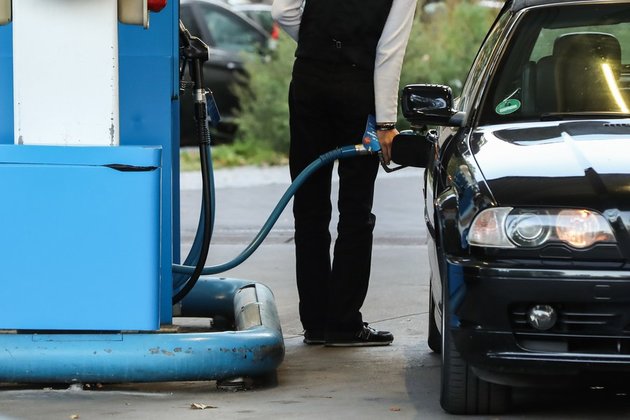

Analysts expected supply to catch up and even exceed demand growth in 2022, highlighted by an increase in exports of liquefied natural gas (LNG), higher output of shale oil, natural gas and natural gas liquid in the United States and the return of investment in non-OPEC production.
by Xinhua writer Liu Yanan
NEW YORK, Dec. 22 (Xinhua) — Crude oil prices could soften in the coming months as looming oversupply is turning oil producers’ fortunes around, according to industry institutions and analysts. Meanwhile, a possible failure to revive the Iran nuclear deal by the first quarter of 2022 together with expected return of oil demand in the summer of next year could result in a spike of oil prices.
While supply shortage in the second half of 2021 drove up the prices of oil, natural gas and coal in many parts of the world, supply is surpassing demand in the global oil market leading to a buildup of inventories.
Global oil production is poised to outpace demand from December of 2021, led by growth in the United States and the Organization of the Petroleum Exporting Countries (OPEC) and its partnering oil producing countries, said a monthly oil market report recently issued by the International Energy Agency (IEA).
Global crude oil supply could increase by as much as 6.4 million barrels per day in 2022, up from a rise of 1.5 million barrels per day in 2021, while global oil demand is projected to expand 3.3 million barrels per day in 2022, in comparison with 5.4 million barrels per day of growth in 2021, according to the IEA.
Analysts with S&P Global Platts Analytics expected supply to catch up and even exceed demand growth in 2022, highlighted by an increase in exports of liquefied natural gas (LNG), higher output of shale oil, natural gas and natural gas liquid in the United States and the return of investment in non-OPEC production.

Oil prices would start to rebalance and normalize in the first quarter of 2022 as inventories recover, according to S&P Global Platts Analytics.
“For 2022 as a whole, we expect that growth in production from OPEC Plus, of U.S. tight oil, and from other non-OPEC countries will outpace slowing growth in global oil consumption, especially in light of renewed concerns about COVID-19 variants,” said a short-term energy outlook for December recently issued by the U.S. Energy Information Administration (EIA).
In reality, crude oil futures prices have witnessed substantial correction since early November due to the decision to release crude oil stocks in a few major oil consuming countries and warmer-than-expected winter in the Northern Hemisphere so far.
Brent crude oil futures prices will average 70 U.S. dollars per barrel in 2022, according to the forecast by the EIA.
The ceiling of oil prices depends on real demand and oil prices would continue to fluctuate at around 80 U.S. dollars per barrel in 2022, according to Ji Mo, chief China economist with Fidelity International.
Oil prices will remain volatile in the near term as investors assess the latest news on the new COVID-19 variant Omicron, said analysts with UBS Global Wealth Management in a recent report.
UBS reiterated its positive outlook for oil banking on continuous growth of global oil demand in 2022 and the flexibility of OPEC Plus in unwinding its production cut deal.

Moreover, a low level of spare capacity in the global oil industry leaves the outcome of Iran nuclear talks consequential to the international oil market in 2022 as a deal between Iran and the United States on the nuclear issue would lead to Iran’s return to the international oil market.
“Iran will significantly influence oil balances in 2022, and by extension, oil prices,” said S&P Global Platts Analytics.
S&P Global Platts Analytics assumes a framework U.S.-Iran nuclear deal will be reached in the first quarter of 2022, with full sanctions relief by April, facilitating 1.4 million barrels per day of Iranian oil supply growth by the end of 2022.
However, the absence of an Iran nuclear deal could leave the market vulnerable to breaking 100 U.S. dollars per barrel if combined with any other disruptive event, according to S&P Global Platts Analytics. The key test will come in the third quarter of 2022 as summer demand challenges supply resilience.
A no-deal with Iran nuclear issue would mean less oil supply from Iran and a possible military engagement, with both cases supportive for oil prices, according to a recent report by JBC Energy.
“It is more likely to us that an agreement will eventually be found” considering Iran already has sufficient stocks of enriched material, said JBC Energy.
24World Media does not take any responsibility of the information you see on this page. The content this page contains is from independent third-party content provider. If you have any concerns regarding the content, please free to write us here: contact@24worldmedia.com

A Brief Look at the History of Telematics and Vehicles

Tips for Helping Your Students Learn More Efficiently

How To Diagnose Common Diesel Engine Problems Like a Pro

4 Common Myths About Wildland Firefighting Debunked

Is It Possible To Modernize Off-Grid Living?

4 Advantages of Owning Your Own Dump Truck

5 Characteristics of Truth and Consequences in NM

How To Make Your Wedding More Accessible

Ensure Large-Format Printing Success With These Tips

4 Reasons To Consider an Artificial Lawn

The Importance of Industrial Bearings in Manufacturing

5 Tips for Getting Your First Product Out the Door